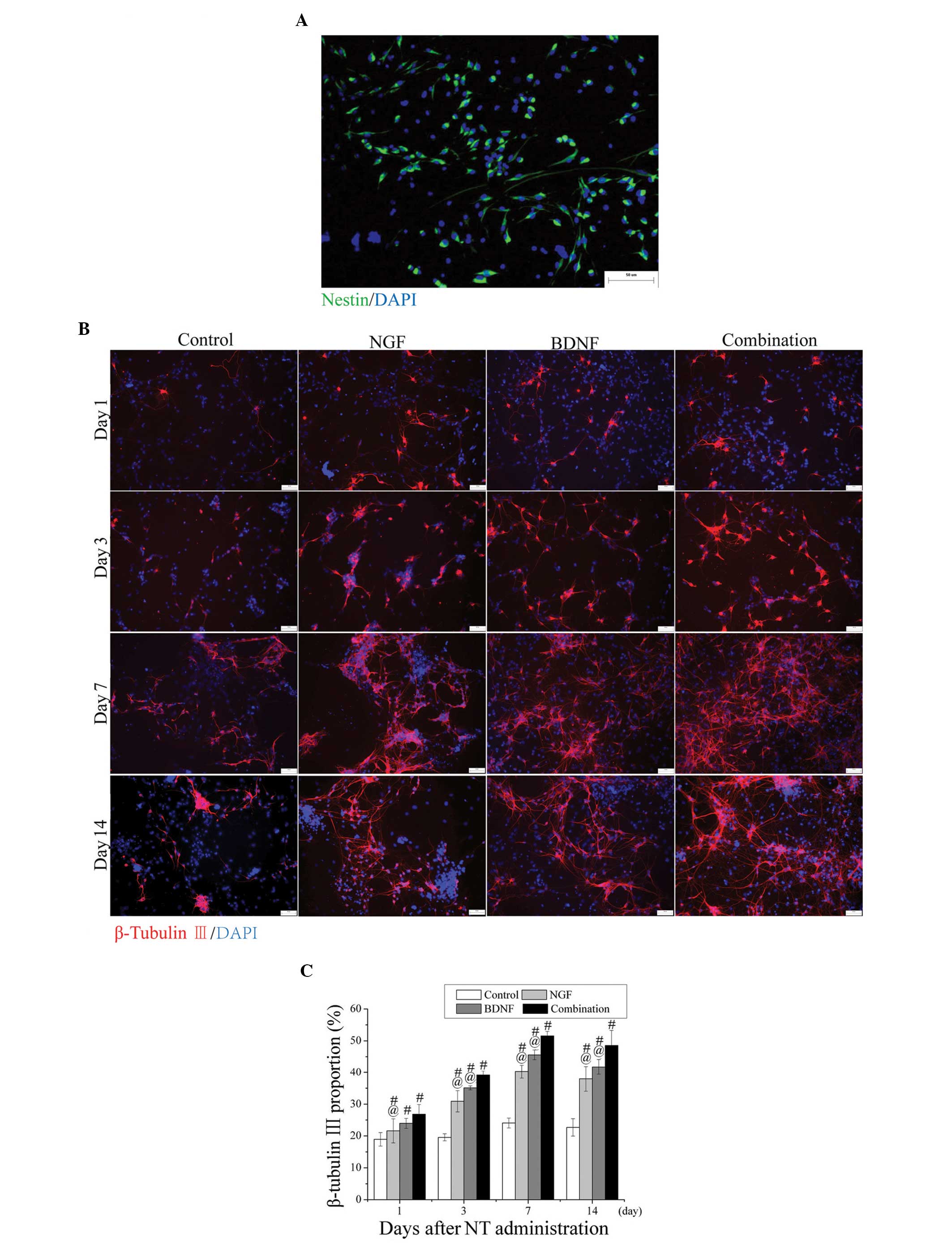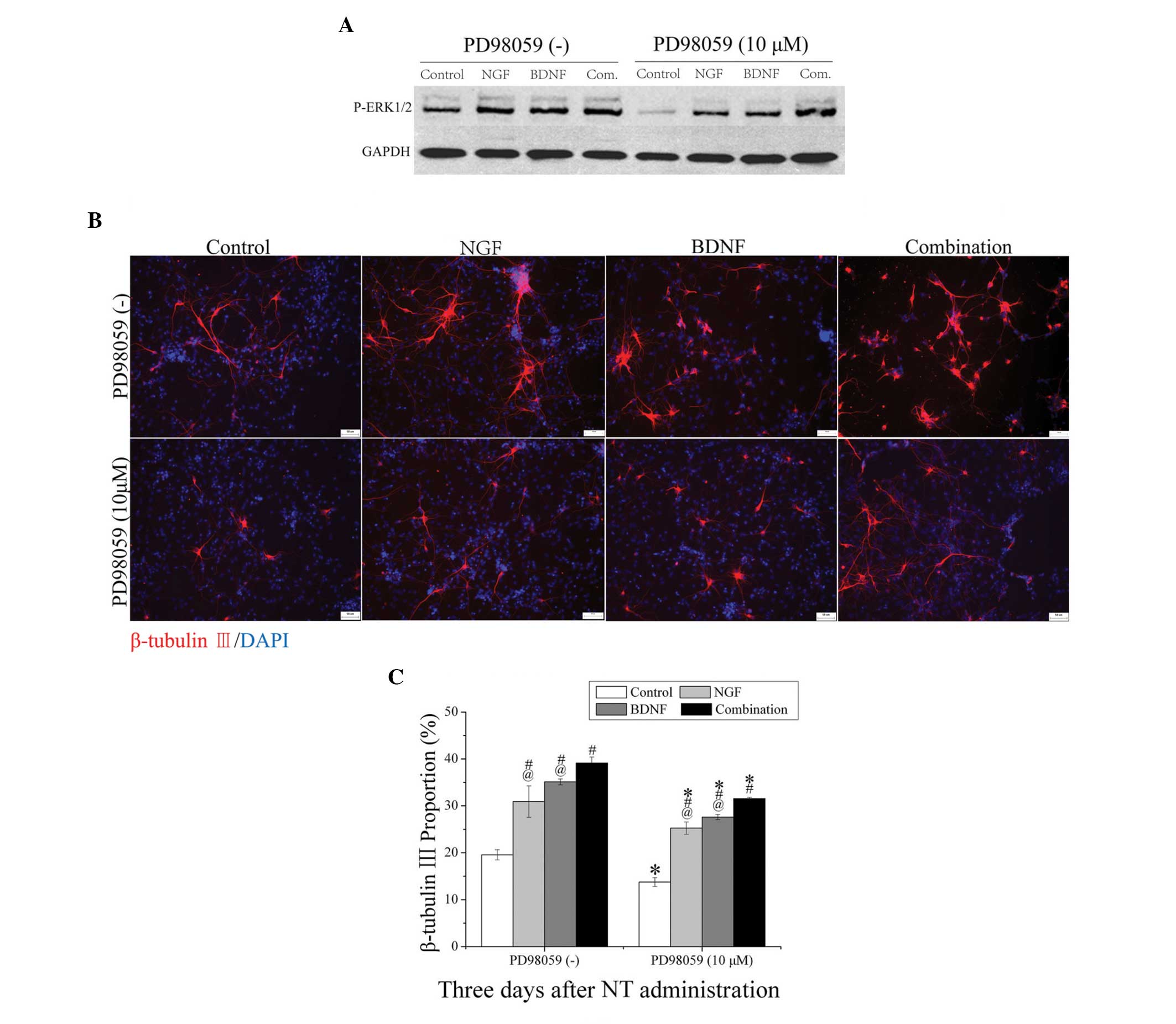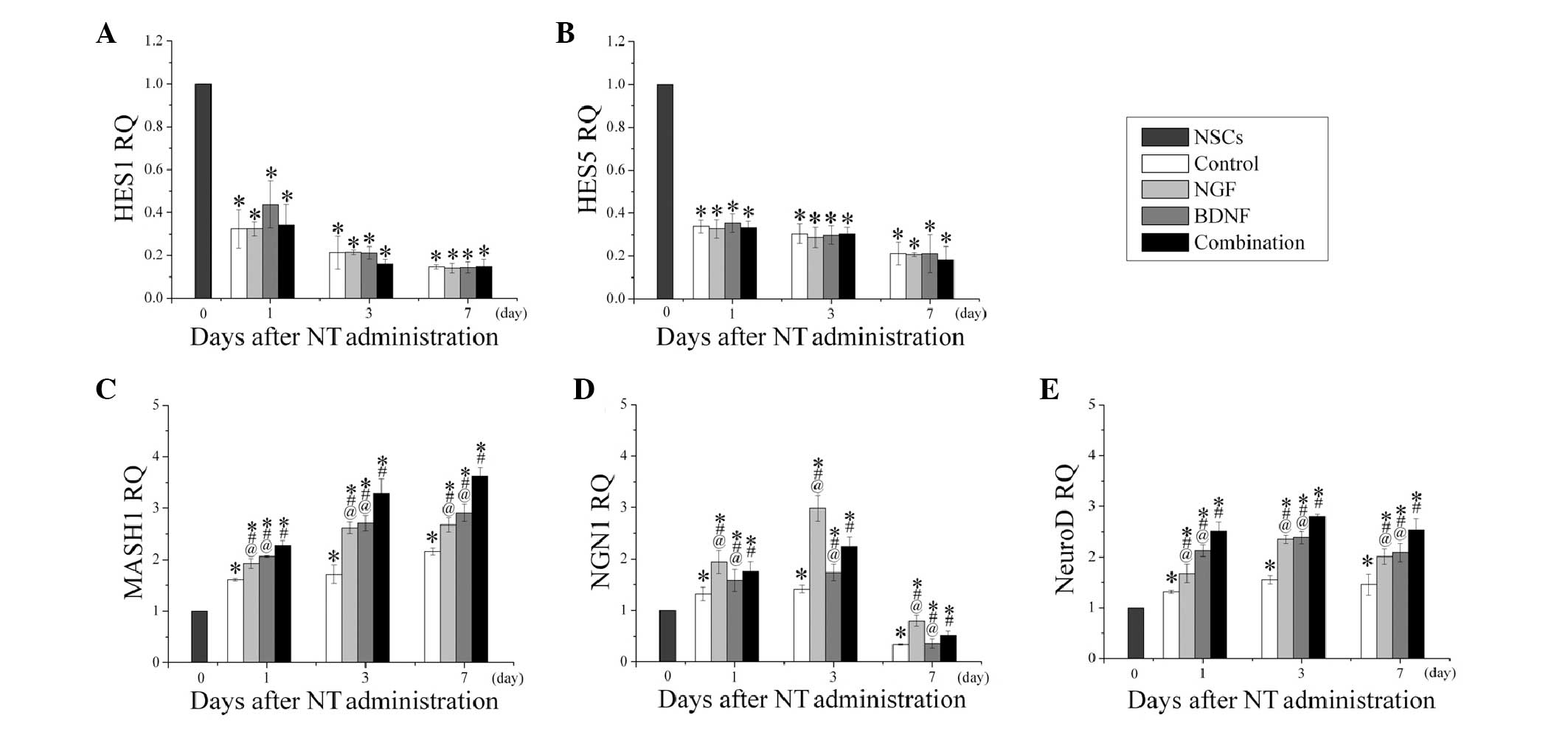|
1
|
Paspala SA, Murthy TV, Mahaboob VS and
Habeeb MA: Pluripotent stem cells - a review of the current status
in neural regeneration. Neurol India. 59:558–565. 2011. View Article : Google Scholar : PubMed/NCBI
|
|
2
|
Song J, Christian KM, Ming GL and Song H:
Modification of hippocampal circuitry by adult neurogenesis. Dev
Neurobiol. 72:1032–1043. 2012. View Article : Google Scholar : PubMed/NCBI
|
|
3
|
Sakaguchi M and Okano H: Neural stem
cells, adult neurogenesis, and galectin-1: from bench to bedside.
Dev Neurobiol. 72:1059–1067. 2012. View Article : Google Scholar : PubMed/NCBI
|
|
4
|
Martínez-Morales PL, Revilla A, Ocaña I,
et al: Progress in stem cell therapy for major human neurological
disorders. Stem Cell Rev. 9:685–699. 2013.PubMed/NCBI
|
|
5
|
Hattiangady B and Shetty AK: Neural stem
cell grafting counteracts hippocampal injury-mediated impairments
in mood, memory, and neurogenesis. Stem Cells Transl Med.
1:696–708. 2012. View Article : Google Scholar
|
|
6
|
Moghadam FH, Alaie H, Karbalaie K, Tanhaei
S, Nasr Esfahani MH and Baharvand H: Transplantation of primed or
unprimed mouse embryonic stem cell-derived neural precursor cells
improves cognitive function in Alzheimerian rats. Differentiation.
78:59–68. 2009. View Article : Google Scholar
|
|
7
|
Blurton-Jones M, Kitazawa M,
Martinez-Coria H, et al: Neural stem cells improve cognition via
BDNF in a transgenic model of Alzheimer disease. Proc Natl Acad Sci
USA. 106:13594–13599. 2009. View Article : Google Scholar : PubMed/NCBI
|
|
8
|
Chittka A: Differential regulation of
SC1/PRDM4 and PRMT5 mediated protein arginine methylation by the
nerve growth factor and the epidermal growth factor in PC12 cells.
Neurosci Lett. 550:87–92. 2013. View Article : Google Scholar
|
|
9
|
Kumamaru E, Numakawa T, Adachi N and
Kunugi H: Glucocorticoid suppresses BDNF-stimulated MAPK/ERK
pathway via inhibiting interaction of Shp2 with TrkB. FEBS Lett.
585:3224–3228. 2011. View Article : Google Scholar : PubMed/NCBI
|
|
10
|
Wuhanqimuge, Itakura A, Matsuki Y, Tanaka
M and Arioka M: Lysophosphatidylcholine enhances NGF-induced MAPK
and Akt signals through the extracellular domain of TrkA in PC12
cells. FEBS Open Bio. 3:243–251. 2013. View Article : Google Scholar
|
|
11
|
Zhang C, Zhang Z, Shu H, et al: The
modulatory effects of bHLH transcription factors with the
Wnt/beta-catenin pathway on differentiation of neural progenitor
cells derived from neonatal mouse anterior subventricular zone.
Brain Res. 1315:1–10. 2010. View Article : Google Scholar
|
|
12
|
Ahmed S, Gan HT, Lam CS, et al:
Transcription factors and neural stem cell self-renewal, growth and
differentiation. Cell Adh Migr. 3:412–424. 2009. View Article : Google Scholar : PubMed/NCBI
|
|
13
|
Kabos P, Kabosova A and Neuman T: Blocking
HES1 expression initiates GABAergic differentiation and induces the
expression of p21(CIP1/WAF1) in human neural stem cells. J Biol
Chem. 277:8763–8766. 2002. View Article : Google Scholar
|
|
14
|
Aguirre A, Rubio ME and Gallo V: Notch and
EGFR pathway interaction regulates neural stem cell number and
self-renewal. Nature. 467:323–327. 2010. View Article : Google Scholar : PubMed/NCBI
|
|
15
|
Krolewski RC, Packard A, Jang W, Wildner H
and Schwob JE: Ascl1 (Mash1) knockout perturbs differentiation of
nonneuronal cells in olfactory epithelium. PLoS One. 7:e517372012.
View Article : Google Scholar : PubMed/NCBI
|
|
16
|
Flasse LC, Pirson JL, Stern DG, et al:
Ascl1b and Neurod1, instead of Neurog3, control pancreatic
endocrine cell fate in zebrafish. BMC Biol. 11:782013. View Article : Google Scholar : PubMed/NCBI
|
|
17
|
Velkey JM and O’Shea KS: Expression of
Neurogenin 1 in mouse embryonic stem cells directs the
differentiation of neuronal precursors and identifies unique
patterns of down-stream gene expression. Dev Dyn. 242:230–253.
2013. View Article : Google Scholar
|
|
18
|
Ito H, Nakajima A, Nomoto H and Furukawa
S: Neurotrophins facilitate neuronal differentiation of cultured
neural stem cells via induction of mRNA expression of basic
helix-loop-helix transcription factors Mash1 and Math1. J Neurosci
Res. 71:648–658. 2003. View Article : Google Scholar
|
|
19
|
Cundiff P, Liu L, Wang Y, et al: ERK5 MAP
kinase regulates neurogenin1 during cortical neurogenesis. PLoS
One. 4:e52042009. View Article : Google Scholar : PubMed/NCBI
|
|
20
|
Choi KC, Yoo DS, Cho KS, Huh PW, Kim DS
and Park CK: Effect of single growth factor and growth factor
combinations on differentiation of neural stem cells. J Korean
Neurosurg Soc. 44:375–381. 2008. View Article : Google Scholar : PubMed/NCBI
|
|
21
|
Liu FF, Xu LP, Long DH, Chen Y, Zhang JD
and Long JY: Culture of neural stem cells in vitro and the
expression changes of HES1 and MASH1 during differentiation. J Sun
Yat-Sen Uni (Med Sci). 35:18–24. 2014.
|
|
22
|
Babu H, Claasen JH, Kannan S, Rünker AE,
Palmer T and Kempermann G: A protocol for isolation and enriched
monolayer cultivation of neural precursor cells from mouse dentate
gyrus. Front Neurosci. 5:892011. View Article : Google Scholar : PubMed/NCBI
|
|
23
|
Theus MH, Ricard J and Liebl DJ:
Reproducible expansion and characterization of mouse neural
stem/progenitor cells in adherent cultures derived from the adult
subventricular zone. Curr Protoc Stem Cell Biol Chapter 2: Unit 2D.
8:2012. View Article : Google Scholar
|
|
24
|
Chen BY, Wang X, Wang ZY, Wang YZ, Chen LW
and Luo ZJ: Brain-derived neurotrophic factor stimulates
proliferation and differentiation of neural stem cells, possibly by
triggering the Wnt/beta-catenin signaling pathway. J Neurosci Res.
91:30–41. 2013.
|
|
25
|
Yuan J, Huang G, Xiao Z, Lin L and Han T:
Overexpression of beta-NGF promotes differentiation of bone marrow
mesenchymal stem cells into neurons through regulation of AKT and
MAPK pathway. Mol Cell Biochem. 383:201–211. 2013. View Article : Google Scholar : PubMed/NCBI
|
|
26
|
Kaplan DR and Miller FD: Neurotrophin
signal transduction in the nervous system. Curr Opin Neurobiol.
10:381–391. 2000. View Article : Google Scholar : PubMed/NCBI
|
|
27
|
Ortega JA and Alcantara S:
BDNF/MAPK/ERK-induced BMP7 expression in the developing cerebral
cortex induces premature radial glia differentiation and impairs
neuronal migration. Cereb Cortex. 20:2132–2144. 2010. View Article : Google Scholar
|
|
28
|
Lundell TG, Zhou Q and Doughty ML:
Neurogenin1 expression in cell lineages of the cerebellar cortex in
embryonic and postnatal mice. Dev Dyn. 238:3310–3325. 2009.
View Article : Google Scholar : PubMed/NCBI
|
|
29
|
Allen SJ, Watson JJ, Shoemark DK, Barua NU
and Patel NK: GDNF, NGF and BDNF as therapeutic options for
neurodegeneration. Pharmacol Ther. 138:155–175. 2013. View Article : Google Scholar : PubMed/NCBI
|
|
30
|
Cardozo AJ, Gomez DE and Argibay PF:
Neurogenic differentiation of human adipose-derived stem cells:
relevance of different signaling molecules, transcription factors,
and key marker genes. Gene. 511:427–436. 2012. View Article : Google Scholar
|












